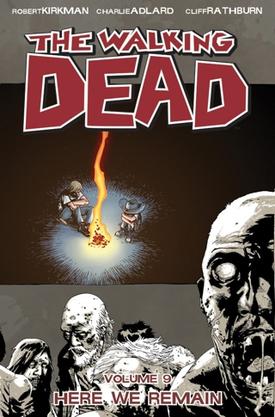
1989
How disappointing.
Since I’d never read a full-length novel by Barker before, I figured I’d start with an early “masterpiece”: THE GREAT AND SECRET SHOW, aka, The First Book of the Art. Sometimes, the quotes for a book can give you enough of an idea about a book to warrant a purchase, or build up a bit of hype. Such was the case with this novel; everyone from J G Ballard to the Wall Street Journal claims it to be a truly outstanding piece of fiction.
Two things however: not everyone who provides a quote for a book has actually read the book in question (this applies to other authors, especially) and this was written 20 years ago. To put it simply, Barker’s masterpiece has been surpassed, several times over.
But if you can put that to the back of your mind for now, and imagine you’re reading it in 1989…you’d still be disappointed.
THE GREAT AND SECRET SHOW is boring. Sometimes, really boring. And the worst thing about this is, there are plenty of interesting and exciting sections and set pieces littered throughout the book – just enough to convince you to keep reading – but not enough to make this 690 page tome particularly recommendable.
Everything starts off promisingly enough, as we join Randolph Jaffe, a middle-aged nobody working in the dead letter department in an Omaha post office. Whilst there (in the ‘crossroads of America’) he begins to discover a lot of the dead letters reference each other, and keep mentioning the ‘Art’. Something snaps in Jaffe, and he becomes convinced that he’s privy to a secret that could, and can, fundamentally alter everything. And what usually happens to people when they discover this sort of secret? That’s right – they go a bit loopy.
Jaffe, in his travels to unlock the mystery of the Art, begins to transcend his normal human state, and ends up as The Jaff. Along the way, he encounters a drug-addicted professor, whom he enlists in his search. The professor’s name is Fletcher, and he also ends up transcending his normal state, and becomes The Jaff’s enemy. Herein lies one of the main problems of THE GREAT AND SECRET SHOW: The Jaff, and Fletcher, as supernatural adversaries, are incredibly dull. The Jaff can take fears from people and make them manifest, as can Fletcher, except he uses people's dreams. These are a nice touch, but as powers, ultimately prove as insubstantial as the creations themselves. It’s more a case of ‘dark versus light’ than anything else, which would be okay were it not for the fact The Jaff isn’t a particularly frightening baddie, and Fletcher is, quite frankly, pathetic.
Over the next million pages, The Jaff and Fletcher fight and end up buried underground, in a town called Palomo Grove. The Grove then provides the focus for the rest of the story, as the two enemies impregnate some local girls, and then, years later, return to do battle with the help of their now-teenage offspring. Except it doesn’t quite go to plan. There are two twins, children of The Jaff, but one of them, a girl, falls in love with the sole remaining child of Fletcher, which complicates matters.
To cut an extremely long story short, the Art is a way to ‘unlock’ reality, and involves places called the Cosm, the Metacosm, and Quiddity, which is a ‘dream sea’, and therefore not a real sea. It tells you something when some of the characters themselves admit that “it’s very confusing”.
In the battle to unlock the Art, The Jaff and Fletcher have several ‘final stands’, thereby turning the main plot into a bit of a farce. “He’s finally dead!” one of them cries. A few chapters later, “Oh wait, he’s still alive!” is the irritating reveal. Also finding themselves involved in this ridiculously long battle are some of the most improbably-named characters ever created: Tesla Bombeck, Grillo, and Harry D’Amour. Thankfully, most of the human characters are genuinely interesting, and I was left wanting to find out more about some of them (especially Grillo, a journalist whose integrity has been washed down the pan, leaving him to try and reassert his honour and moral compass).
There are some nice touches towards the final, final climax, including: what happens when someone manages to use the Art; The Jaff getting a chance to redeem himself, and the suggestion that a Lovecraftian evil is closing in on our world, ready to send everyone insane.
Overall though, it’s simply too long-winded to attract new converts to Barker, so something easier to digest (figuratively speaking) like his Books of Blood collections, would probably be a more sensible bet. Plus, Barker still hasn’t written The Third Book of the Art, which leaves the final question: do you really want to start reading a story that, technically, hasn’t got an ending?





.jpg)



